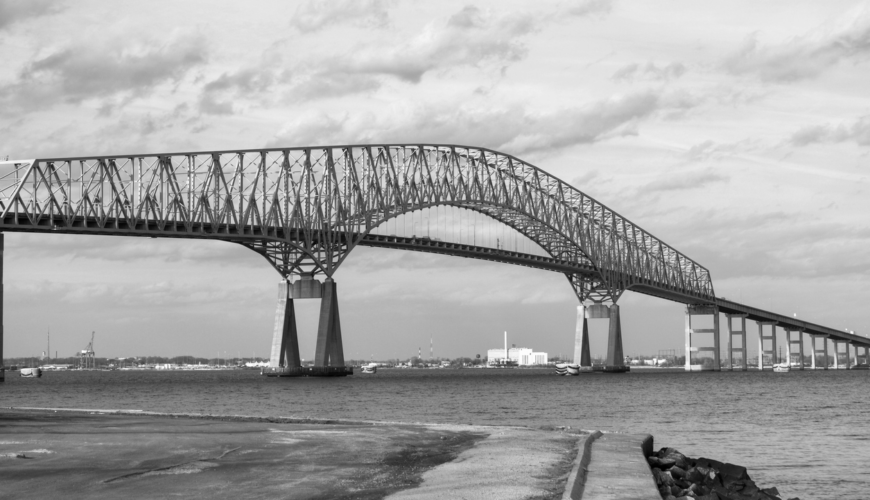The Francis Scott Key Bridge collapse in Baltimore is going to cause additional supply chain disruptions. Recent cargo ship accidents may lead to more conversations on safety while such lessons continue to teach the need for supply chain resiliency.
The latest in a long line of supply chain disruptions took place on March 26 when a 1,000-ft-long cargo ship tragically plowed into the Francis Scott Key Bridge in Baltimore. A tally on the potential loss of life is still underway, but seven cars were likely on the bridge when it collapsed, as well as workers working on pothole repairs on the bridge’s surface.
The Francis Scott Key Bridge, built in 1977, spans 1.6 miles, although when you add in, its approach totals eleven miles. The bridge serves as a major East-West crossway over the Patapsco River, and plays a vital role in East Coast transportation, as does the Port of Baltimore. All vessel traffic into and out of the port is suspended until further notice.
Last year, some 800,000 vehicles passed through the port, moving three million tons of cargo. At the time of the collapse, the port had many trucks inside its terminals. One major issue is that, in many cases, the trucks’ materials cannot pass through the city’s two tunnels and depend on the Francis Scott Key bridge as an alternative. Without that option, transportation routes will remain uncertain, likely resulting in long delays.
Potential alternate routes for cargo ships headed into Baltimore’s port will be north to the Port of New York and New Jersey, or south to the Port of Virginia. The northern option is well-equipped to manage extra volume for the time being. In a typical week, the Port of Baltimore handles around 21,000 container ships. The ship that hit the bridge was headed to Sri Lanka and appears to have lost power just before the impact. While investigations will take some time, one question is whether spring tides—which increase the speed of moving water headed seaward—played a role in the ship’s speed.
The Port of Baltimore has a long history as the East Coast’s largest for managing roll-on/roll-off cargo, such as cars and trucks. The automotive supply chain still hasn’t entirely recovered from the pandemic, so the temporary loss of the port will only prolong those issues. The port is also a top coal exporter, liquefied natural gas, and wastepaper. Around 45 ships were in port at the time of the collision, and their near future remains in question.
Shipping giant Maersk had chartered the cargo ship that collided with the bridge. Named the Dali, the ship was about nine years old. The bridge was last inspected in 2021 and received a “fair” rating.
Last month a container ship hit a major road bridge in China. While that ship was smaller, cargo ships have been on an increasingly larger/longer trend in the past few years. Pilots and crews on large ships have anchors to drop in emergencies, which are often more common in tanker ships than cargo ships. The two incidents combined will surely lead to more conversations on safety. In the meantime, the lessons continue to teach the need for supply chain resiliency.


